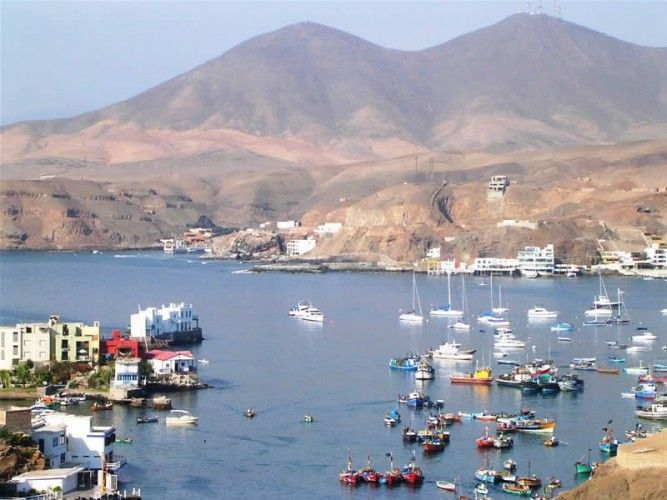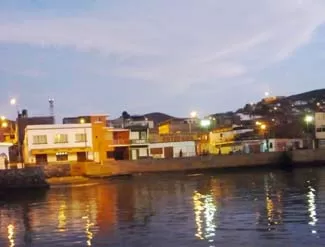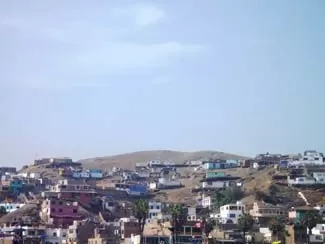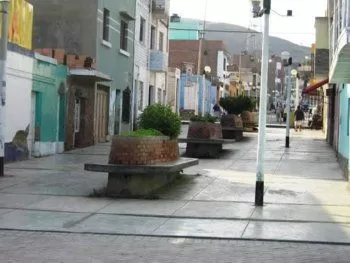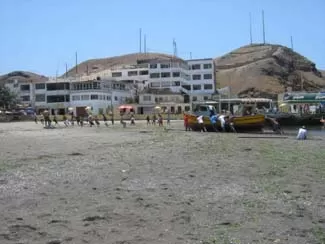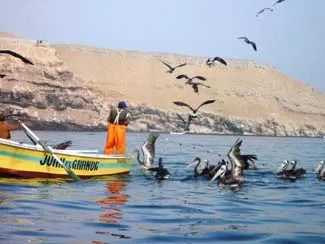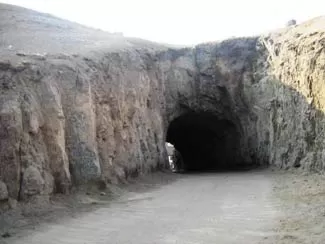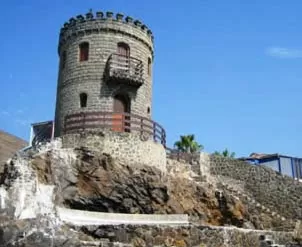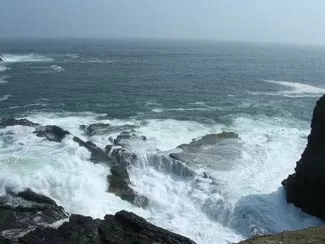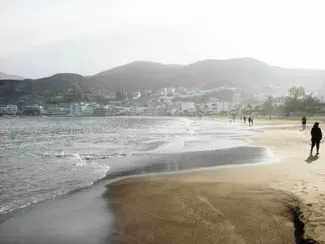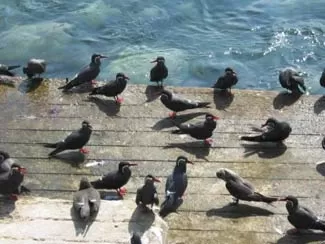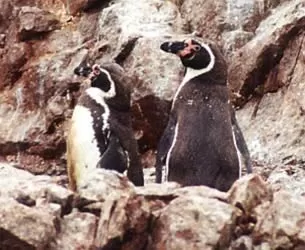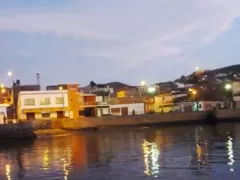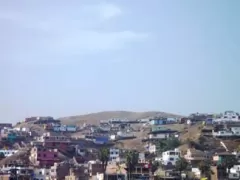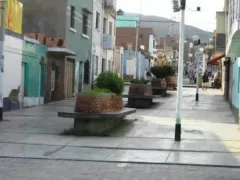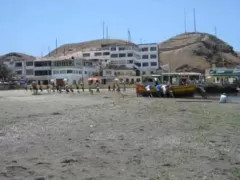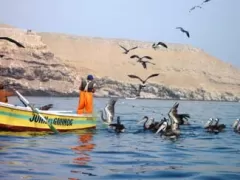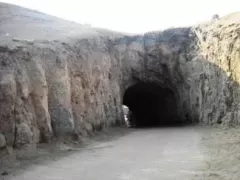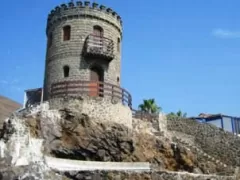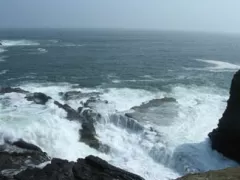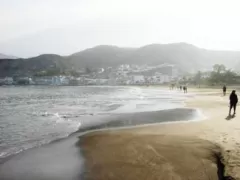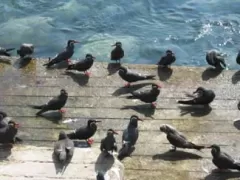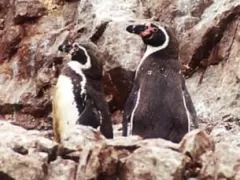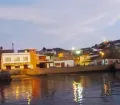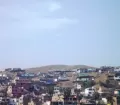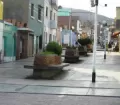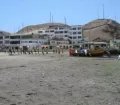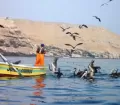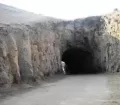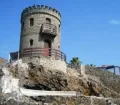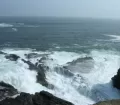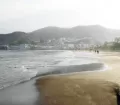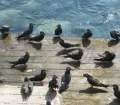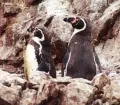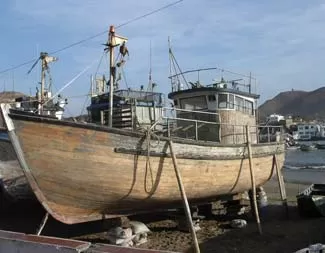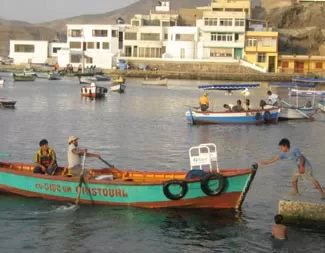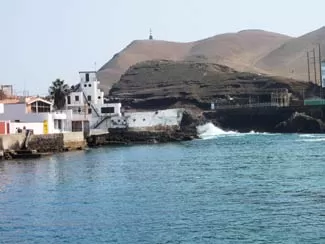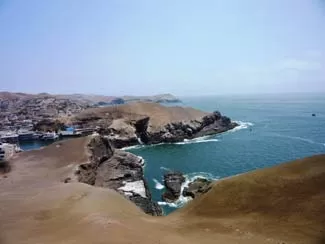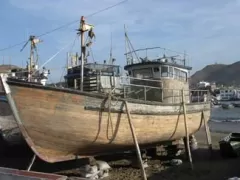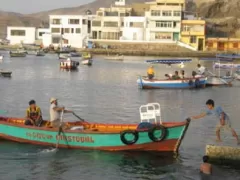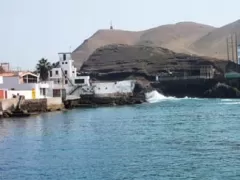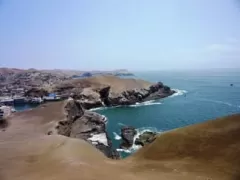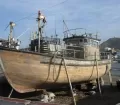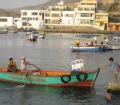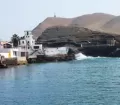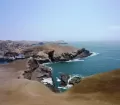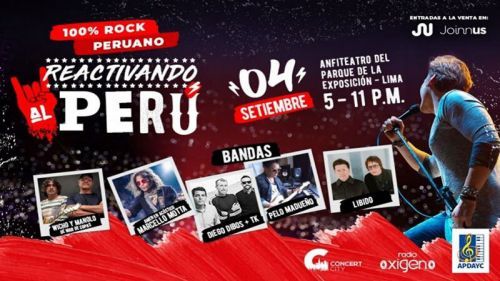Pucusana is a pretty, traditional fishing village and even though it’s around 60 km south of Lima it still belongs to the Lima / Callao Metropolitan area (since 1950). The population lives mainly from fishing and tourism. The small port is the center of life in Pucusana. During the fishing high season hundreds of wooden boats land their catch on the small pier awaited by a huge crowd of local fish workers that prepare the fish.
The waiting refrigerating trucks provide Lima with fresh fish. During the Peruvian summer the beaches of Pucusana are crowded with local tourists "fleeing" Lima.
The bay of Pucusana with its nice sandy beaches and very calm water provides perfect conditions for swimming, water-ski, diving and all other water-sports. Watching birds, sea lions or dolphins can be done the best on a boat trip. If you need a break from Lima, Pucusana is a nice place to go for a day or two, especially in the summer months.
Facts & Figures about Pucusana
The district of Pucusana was officially created on the 21st of January 1943. Back then San Bartolo, Cantera and Yesera were still part of the newly established district of Pucusana that belonged to the Province of Cañete. Only in 1950 the district of San Bartolo and Pucusana became part of Lima. Pucusana is located about 60 km south of Lima, connected with the capital through the South Pan American Highway. The district covers an area of 37.83km².
The beach resort is bounded in the north by the district of Santa Maria del Mar, in the east by the Province of Cañete and in the south and east by the Pacific Ocean.
Brief History of Pucusana
The history of Pucusana is strongly connected with the development of the nearby Chilca. It is assumed that the inhabitants of the Chilca / Pucusana region were the first men to occupy the Peruvian coast. Archaeological findings of simple huts forming a village and extensive burial grounds confirm the theory. The Chilca / Pucusana region is also believed to be the place of the first agricultural activities in the world. Already 8000 BC to 2400 BC the valley was cultivated with yucca, sweet potatoes, kidney beans, red pepper, lúcuma (lucma), mate, guava, pumpkins and later cotton.
In colonial times Pucusana was interesting for the Spaniards due to its small port, where fishermen from Chilca slowly began to settle. The first real houses were built in 1920 by three families. On the 21st of January 1942 the district of Pucusana was officially created. At this time it still belonged to the province of Cañete. Only in 1950 it became part of the Lima province.
Places to visit & attractions in Pucusana
Pucusana, a traditional and pretty fishing village with a typical small harbor, is a nice place to escape the capital of Peru for a few days. It has a lot to offer for anybody in need of relaxation.
Beaches
You find several small beaches in Pucusana. The most popular are Playa de las Ninfas (Beach of the Nymphs), left from the fishing terminal with crystal clear waters and a nice sandy beach, Playa Pucusana, also located in town and Playa Naplo, just out of town an ideal remote beach for young people that love to camp and do water sports. Other beaches are La Yesera, La Honda, Pelicanos, La Tiza and La Quipa.
Water Sports
In and around Pucusana you can do all sorts of water-sports like swimming, water-skiing or boating. The coastal cliffs of Pucusana offer a great number of beautiful diving sites for beginners and advanced divers.
Boat Trips
From Pucusana's port you can take a boat tour enjoying the beautiful bay or arrange a fishing trip. Visit the 'Isla Galápagos' by boat or swim there. At low tide you can wade there through the "Bocana" (the channel that separates Pucusana and the island).
Don't miss the Casa Buque dating back to the 1940s, once being a hotel and restaurant, today it's only part of the scenery. Great to look at is the "Boquerón de Pucusana", a rock formation that was formed by erosion of the waves splashing against the stone. With dolphins visiting the port entrance every day, Pucusana is a great starting point for watching tours.
Pucusana has much more to offer
- Small restaurants (many only open during the summer months) invite you to great typical Peruvian meals.
- Bird lovers can watch a big number of marine birds in the port. Interesting is the "Museo de los Delfines", a small museum focused on the marine life around Pucusana. And of course, don't miss a romantic walk on Pucusana's malecon (beach promenade) by night with a fascinating view over the bay.
- A good way to fully enjoy Pucusana is to do a guided tour (Offered are two different circuits: "ocean" and "land").


